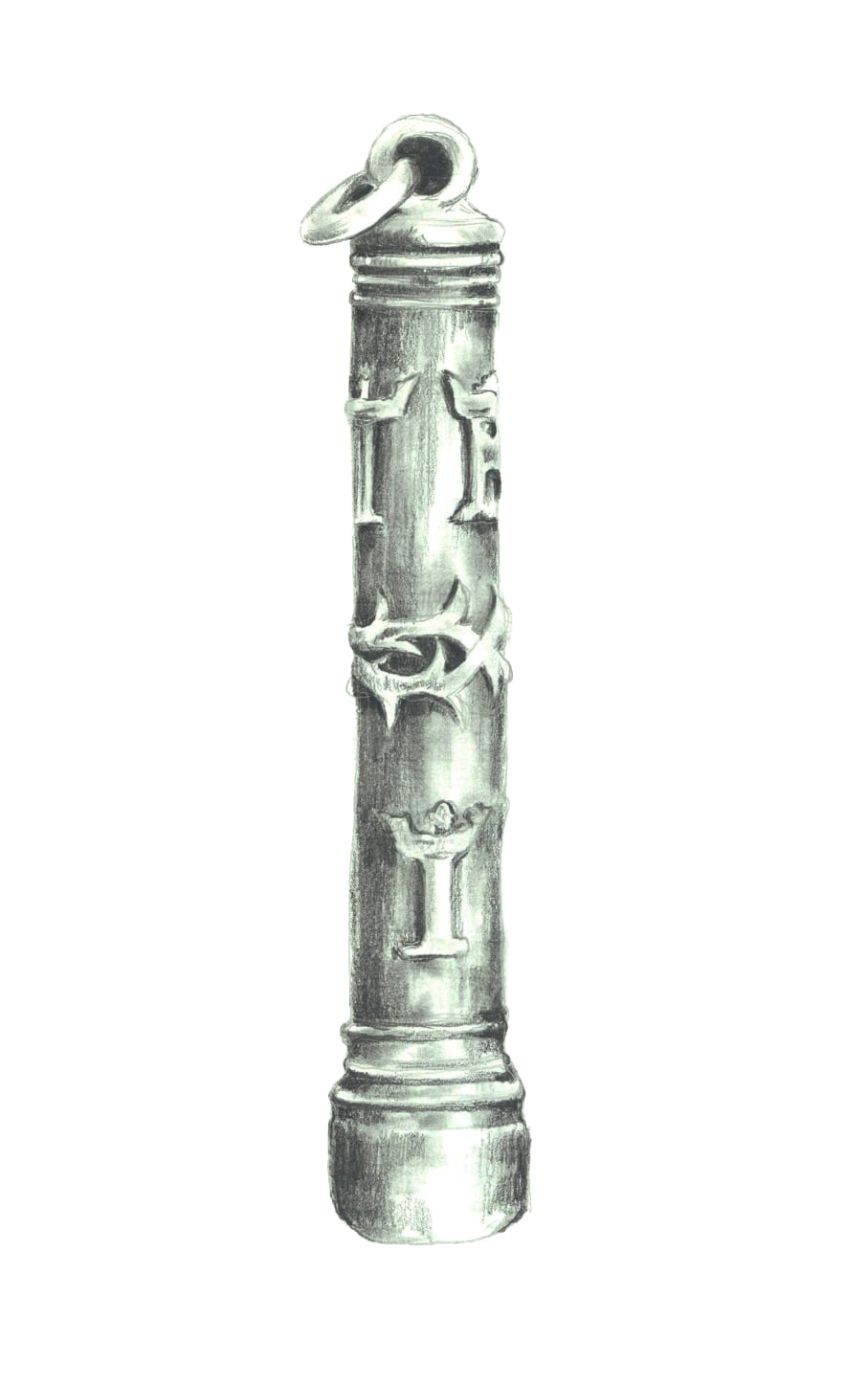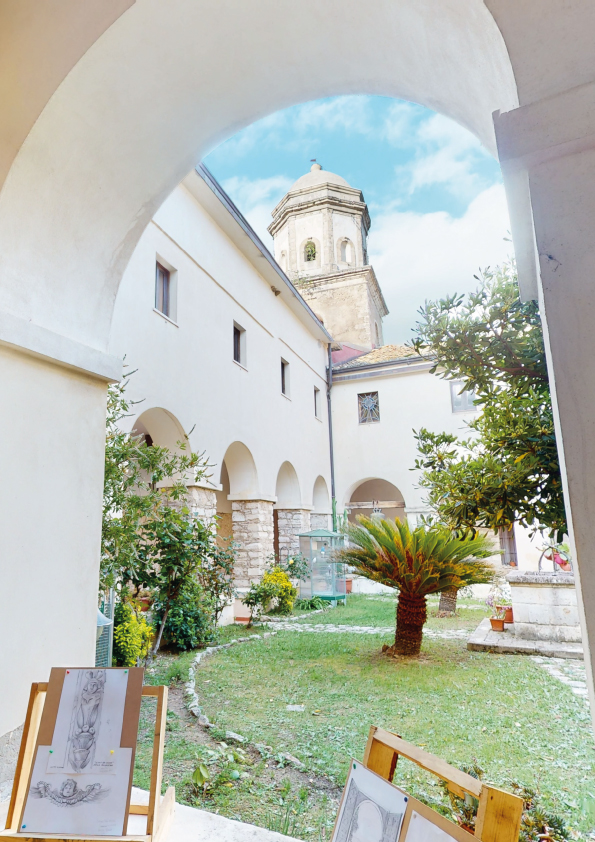
La storia della Santa Spina di Petilia Policastro inizia nel 1523
In the shadow of the large trees of the Sila Piccola that runs parallel to the Ionian coast, in a religious silence just broken by the sounds of nature and the chirping of birds, there is an immaculate gem, the Franciscan Sanctuary of Santa Spina, from the fourteenth-century bell tower and a church rich in art treasures.
The Sanctuary originates from the ancient territory of Santa Maria Eremitana, founded in the nineteenth century by hermits in a forest of the Marquis Nicolo’ Ruffo. The hermitage at first had the appearance and consistency of a modest residence for a few religious, with annexed simple and old church; the Certosini of San Bruno di Colonia managed it. Afterwards, the hermitage passed to the Benedettini and later to the Order of the Cistercensi, then to the Basiliani around the year one thousand. After 1320, it passed to the Franciscans with the denomination of Santa Maria delle Grazie and later Santa Maria dei Frati.
The Sanctuary, known because it contains the relic of the Crown of Jesus Christ, known as the “Sacra Spina” which was brought from France (reposed and venerated in the Chapel of the Royal Bourbon in Paris) to this corner of nature in the intense green of the castanetum where it arrived on August 22, 1523. It is historically established that the relic was donated by the Queen of France, Blessed Joanne of Valois, wife of King Louis XII, to her confessor Father Dionisio Sacco. Sacco was a Franciscan religious, who had been sent to France to study theology, originally from Policastro (who later became Bishop of Reims). On the verge of death, he sent the relic through his nephew and brother Ludovico Albo to his Convent of origin: Santa Maria dei Frati in Policastro.
The Sanctuary later called of the Sacra Spina is in vogue today, the relic is the object of veneration throughout the Marchesato, and the place is an uninterrupted destination of pilgrimage especially from neighbouring towns. The cloister, the large vegetable garden, the forest with which the place is surrounded, are all mystical stations that help the pilgrim rest, find peace and meditate the Passion of Jesus Christ for humankind.
The Convent and the Church have hosted the Minor Friars for many years, and precisely because of the characteristics of the site, here the novitiate took place for numerous young people who aspired to religious life on the example of Francesco of Assisi. They trained and found spiritual strength through the grace of the place. The Friars, in 1980, due to the reduction in the number, left the Convent, which had been entrusted for years to the Diocese of Crotone and Santa Severina. Today the convent is inhabited by the Marian Le cinque Pietre Family who continues the tradition of faith of this Sanctuary, the care and animation of the festivals, the reception of pilgrims.
Late at night, under the stars and in the moonlight, the Convent of Santa Spina becomes immaculate and suggestive in a setting of beauty and spirituality that waits nothing else to show and offer itself to today’s man in need of shelter from the pollution of the world.
SANTA SPINA, BEACON AND GENERATOR OF FAITH
Father Lodovico Sacco’s horse was no longer willing to go further. The religious man descended and walked the path that separated him from the sanctuary. It was August 22, 1523. Even then, as today, the area was lush with chestnut and oak trees, softening the harshness of the mountain and descending into the valley, skirting the powerful waters of the Soleo River. Father Lodovico carried the Holy Thorn (Santa Spina). He had received it from his uncle, Father Dionisio Sacco, also a Franciscan. He had spent a long time at the same convent of Santa Maria delle Grazie. Later, due to his outstanding qualities, the superiors sent him to study at the University of Paris. There, in the French capital, he became the confessor of five queens. It was one of these, Joanna of Valois, wife of Louis XII, who gifted the monk from Petilia a golden tube containing a thorn from the crown of Christ, which in 1239 had been given by Emperor Baldwin II of Constantinople to the King of France, Saint Louis IX.
Father Dionisio welcomed the gift with joy. He already thought of enriching the convent of Petilia. During a diplomatic mission at the Holy See, he believed the long-awaited moment had come; but it was not meant to be. He was recalled to France, during the return journey, a sudden illness struck him and made him stop in Bologna. Three days before he died, he received a visit from his nephew Lodovico. Father Dionisio entrusted the sacred relic to him to take it to the Sanctuary. Father Lodovico honoured the mission. On the spot where his horse stopped, in the heat of that month of August, the Oratory later arose.
The arrival of the sacred relic marked the beginning of a great fervour of works, restorations and embellishments until 1787. Crowds of believers and devotees began to flock, to see and venerate the relic. It was an era of great miracles, especially the healing of seriously ill people. The fame and worship of the Holy Thorn crossed the borders of Petilia, attracting multitudes of pilgrims from all parts of the Kingdom of Naples.
However, waves of doubt about the authenticity of the relic were also raised. Accusations of recklessness were directed against the religious. Archbishop of Santa Severina, Monsignor Giulio Sertorio, in 1543 deemed it appropriate to allow the worship of the Holy Thorn. However, it was not enough, as doubts and controversy continued. It was then considered necessary to subject the Holy Thorn to God’s judgment, as was called at the time, the trial by fire. It was October 20, 1573. The fire did not harm the Holy Thorn; on the contrary, it rose in the air, as if supported by an invisible hand. It was a miracle: God himself had provided proof of authenticity
Prenota una visita guidata

Prenota la visita guidata del convento, i frati della Famiglia Mariana, ti faranno fare la visita, dentro e fuori il convento. Potrai anche sostare nell’atrio e ritrovare un pò di pace, in questo luogo ricco di storia e spiritualità.
Convento, Santuario della Santa Spina di Petilia Policastro
Contatti
(39) 351 995 4513
info@santaspina.it
Indirizzo
Località Santa Spina, Petilia Policastro, Italy
